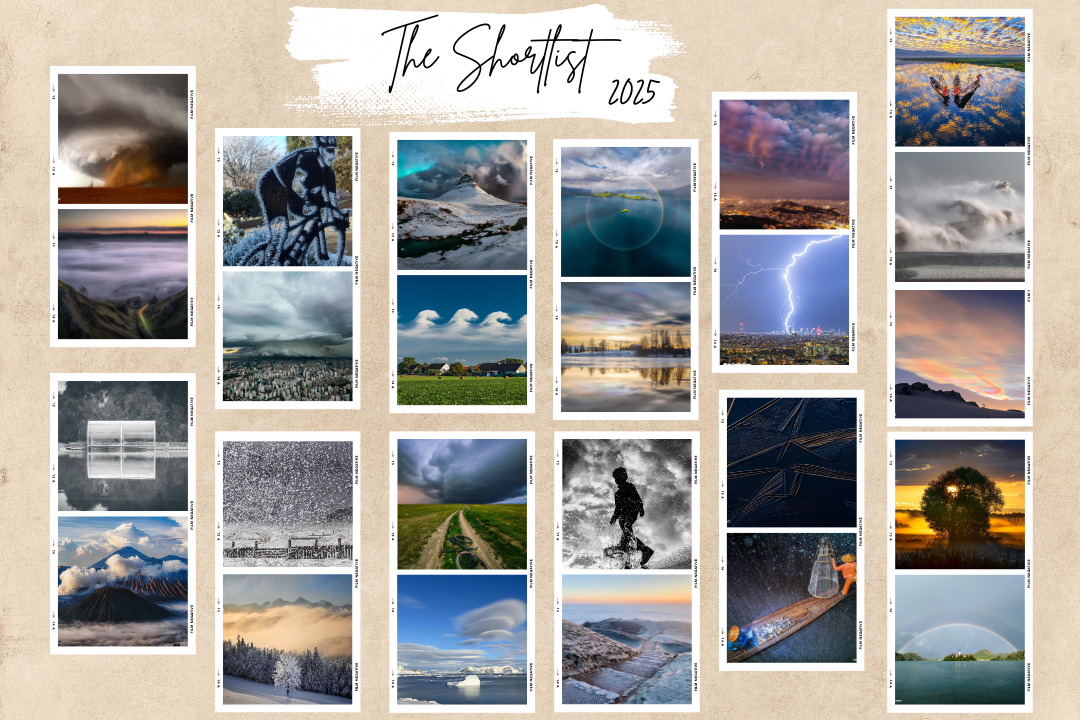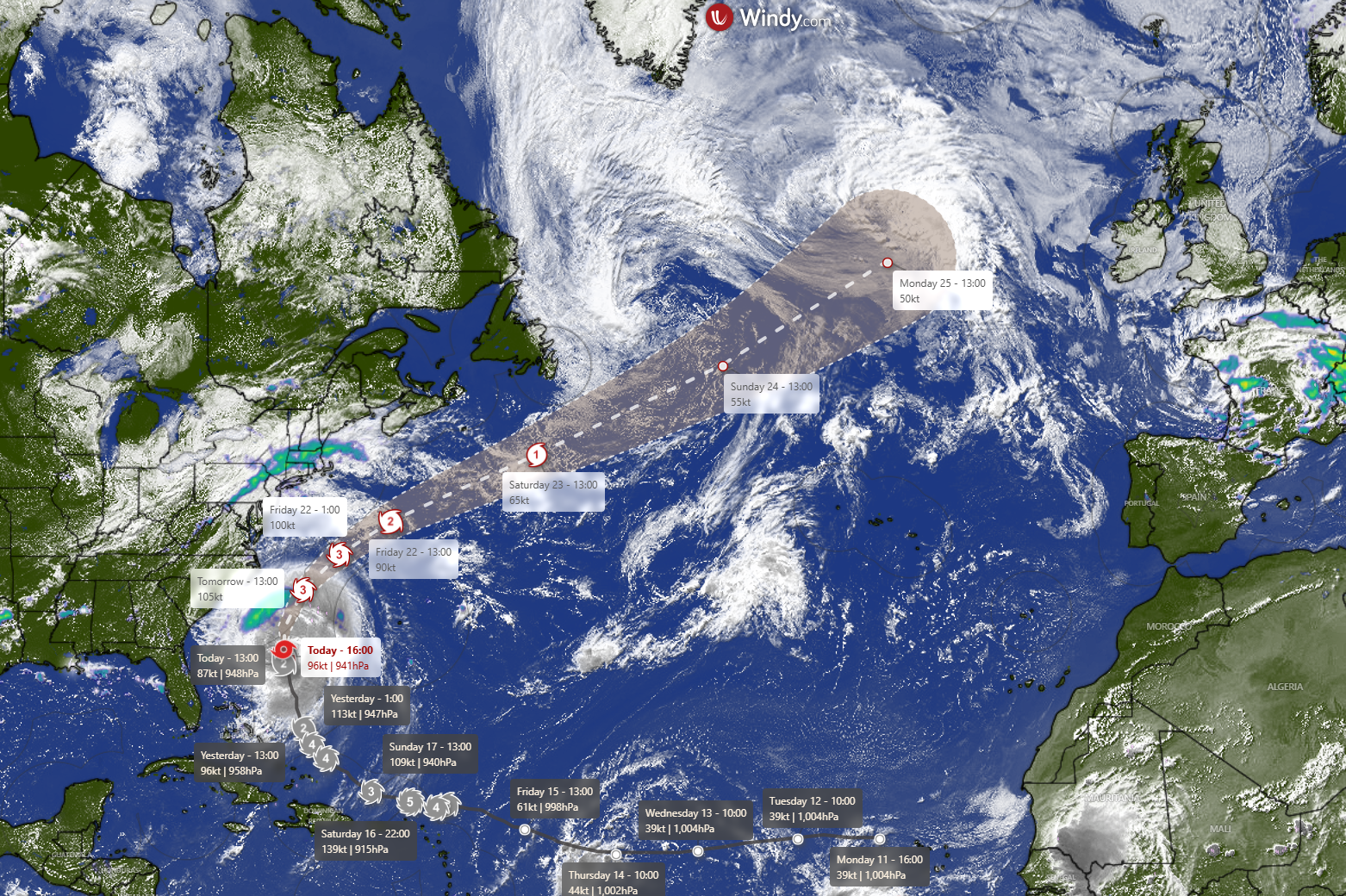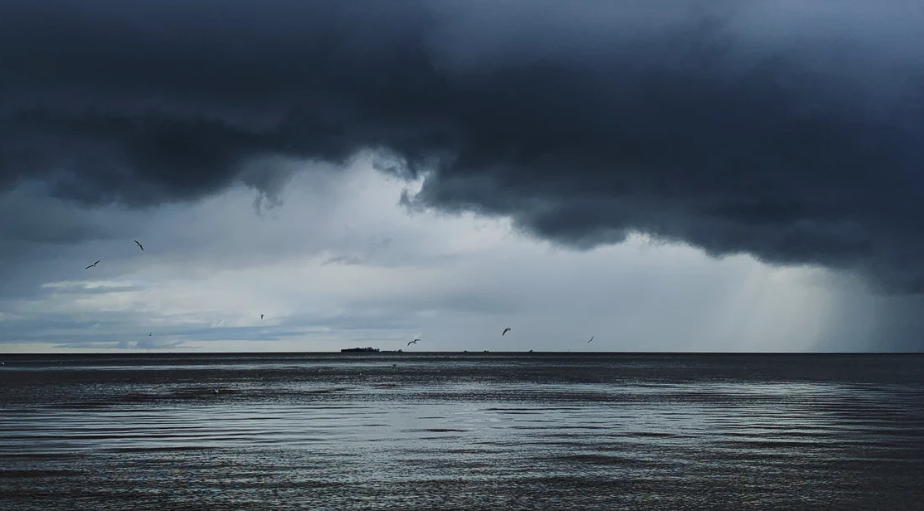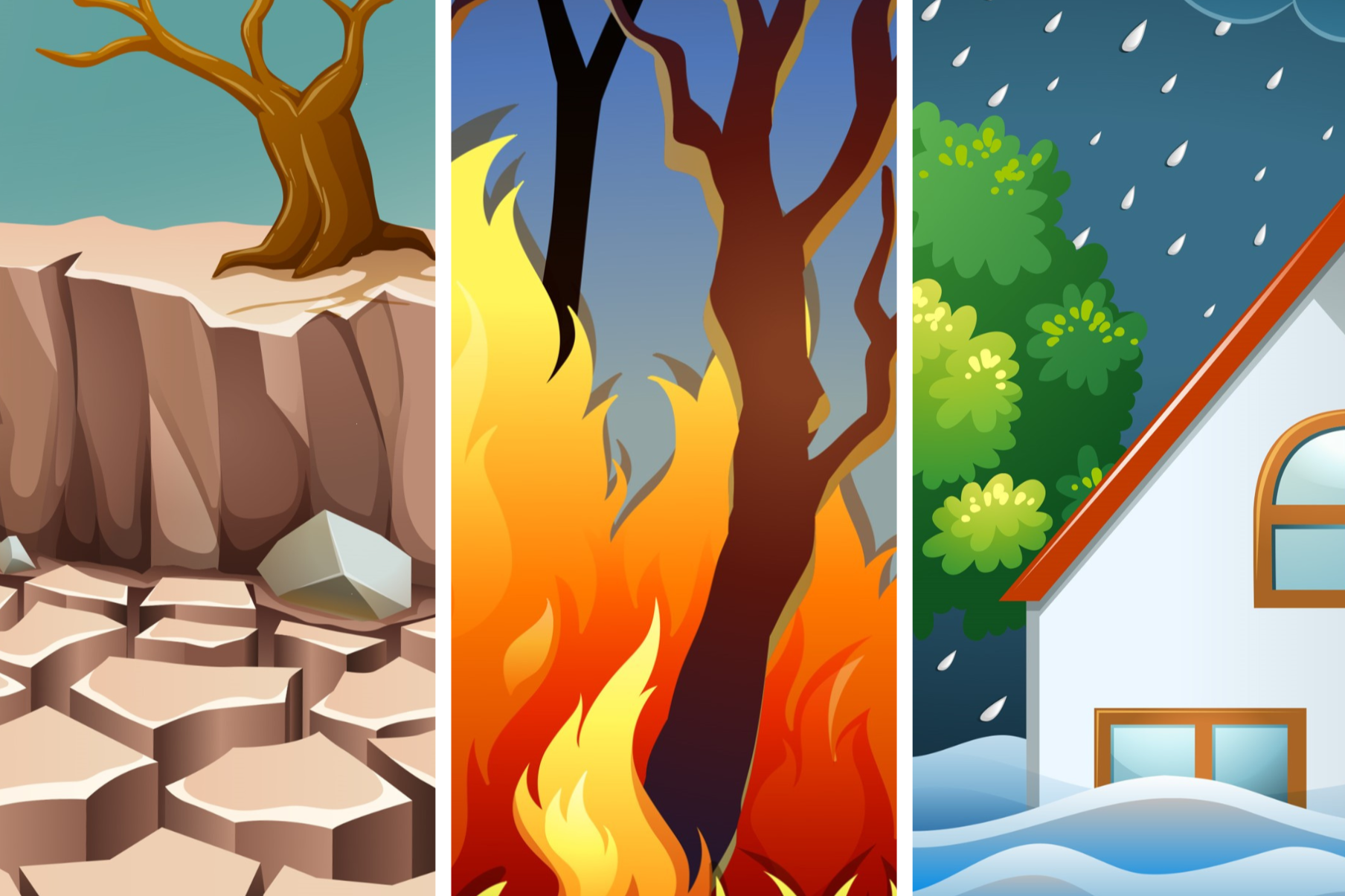

Climate whiplash
by Kirsty McCabe, FRMetS
You might not yet be familiar with the term climate whiplash. Coined fairly recently to describe a rapid shift between opposing weather extremes, such as drought to flooding, or intense heat to harsh cold, such whiplash events are becoming more frequent and severe. What’s more, the sudden transition from one extreme to the other causes more harm than the individual events alone, affecting agriculture, infrastructure, biodiversity and human health.
Take a look at California. Two very wet winters in a row produced lots of grass and shrubs, which then dried out in the long, hot summer that followed in 2024. The result was plenty of tinder-dry fuel ripe for a wildfire, which amplified the devastating wildfires of January 2025 that affected the Los Angeles metropolitan area and San Diego county. A month later, these same areas faced torrential rains and deadly mudslides thanks to an intense “atmospheric” river event. The impact of the downpours was amplified by the fires, as heavy rain will slide off scorched earth more rapidly, increasing the risk of landslides and flooding.
Around the world, the weather is whipping from one extreme to the other, with little time to recover. So why is there an increase in climate whiplash events? The short answer is global warming. Rising temperatures are disrupting key drivers such as the jet stream and the polar vortex, changing our weather patterns.
A recent report by the charity WaterAid revealed that extreme fluctuations between floods and droughts are devasting millions of lives. WaterAid, along with scientists from Cardiff and Bristol Universities, examined climatic trends over the past 42 years in 112 cities around the world, to see if these cities were becoming more prone to floods, or to droughts, and how these changes affect the people who live there.
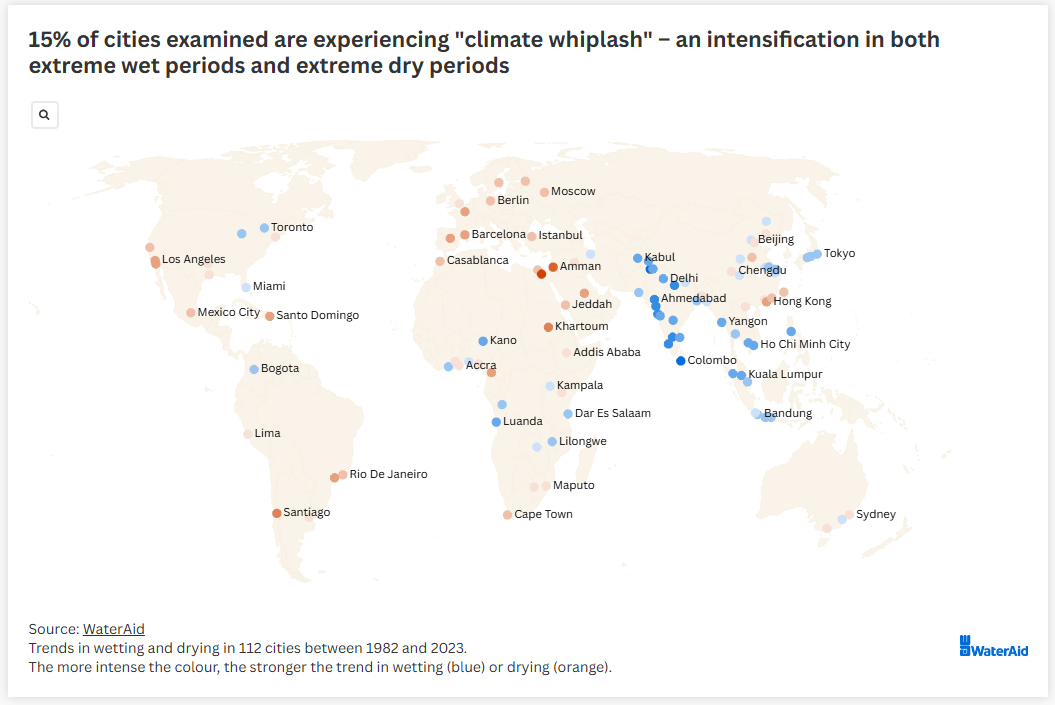
The report found that around 15% of cities examined are experiencing climate whiplash – an intensification in both extreme wet and extreme dry periods.

Blue stripes indicate when the monthly value is wetter than the long-term average; red show when it’s drier.
Credit: Cardiff University and University of Bristol
Meanwhile, more than 20% of cities examined are seeing dramatic climate reversals. Communities that used to endure long droughts are now facing more frequent flooding, and previously flood-prone areas are becoming increasingly dry.
As our planet continues to warm, more of us will feel the impacts of climate whiplash.

